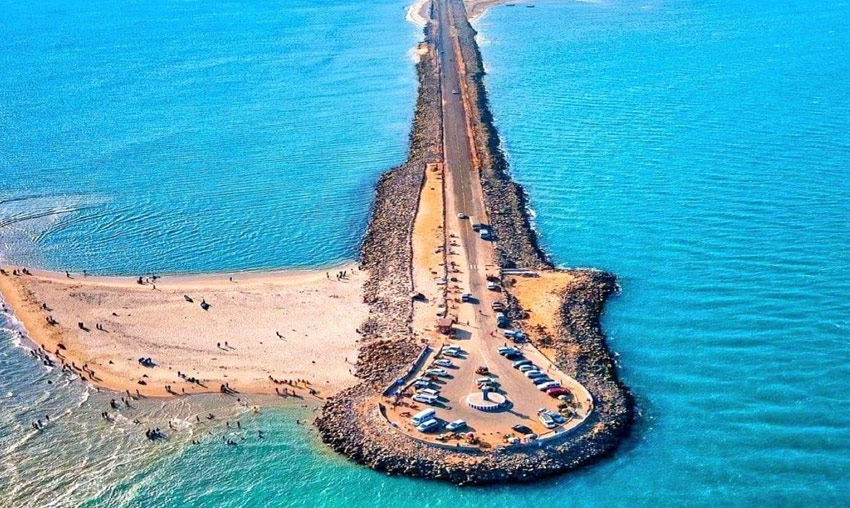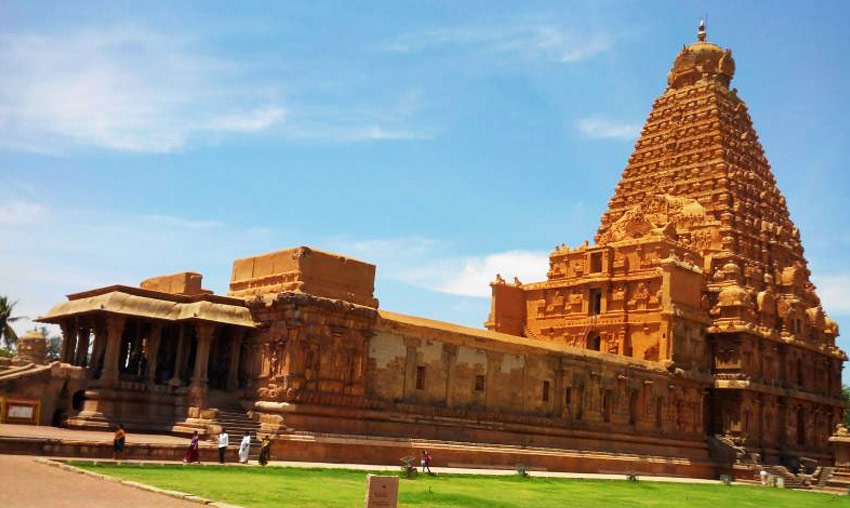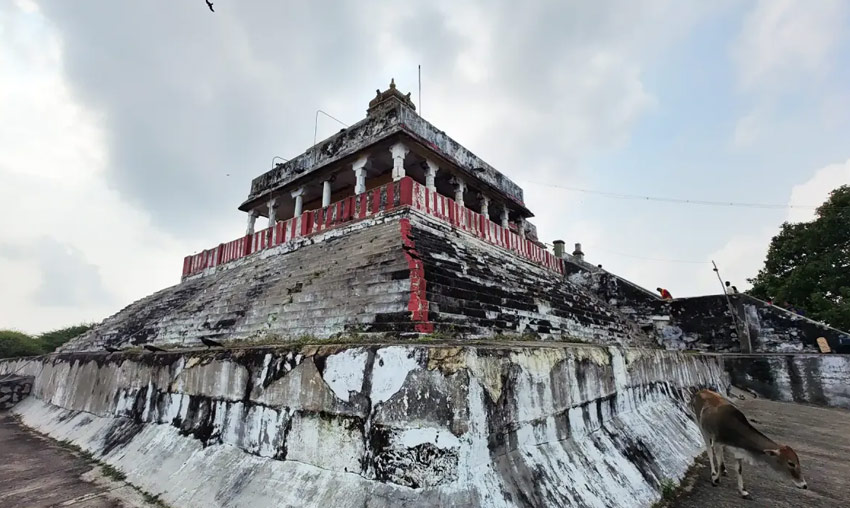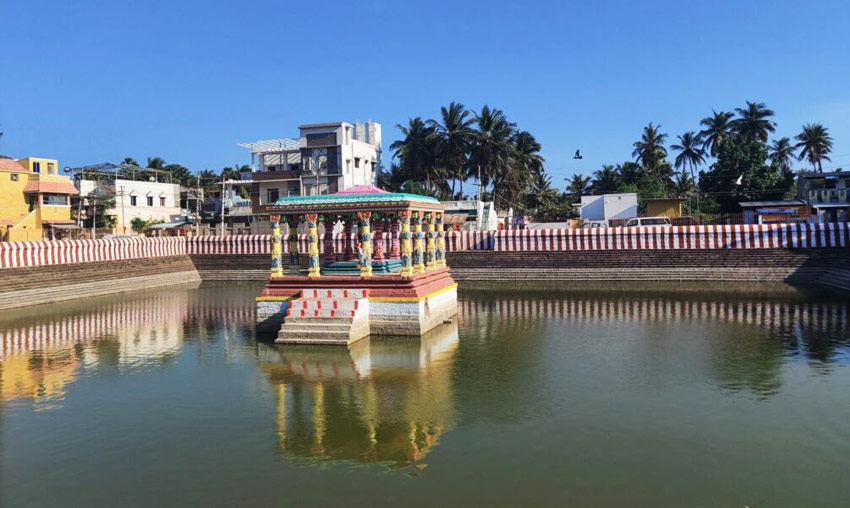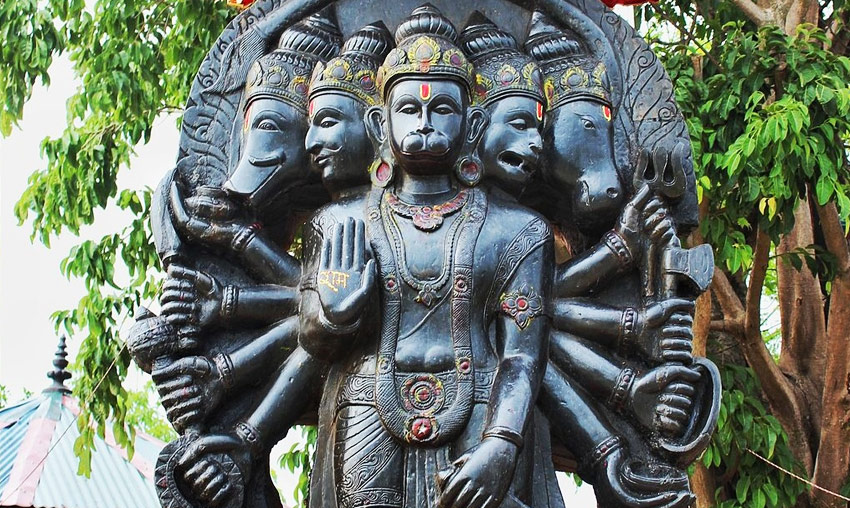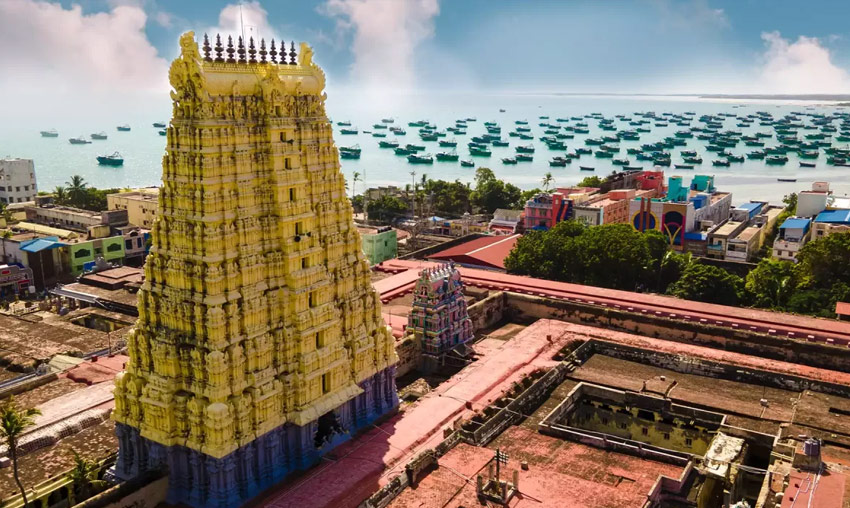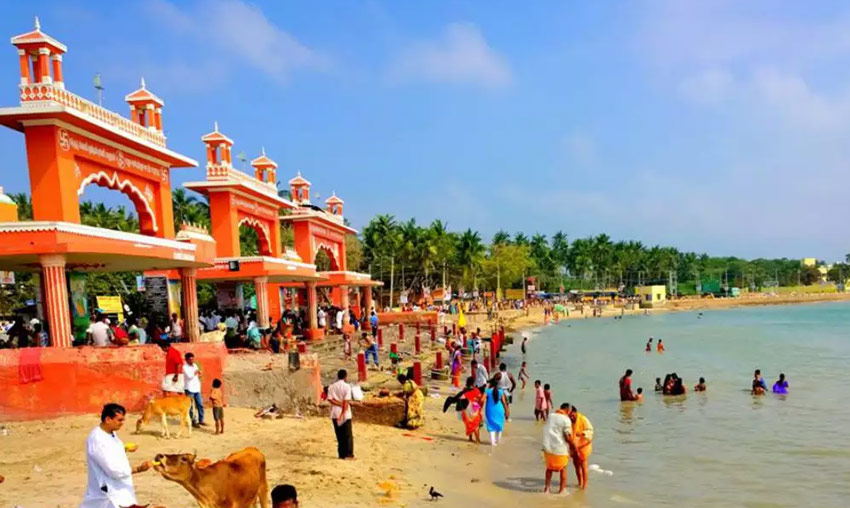Dhanushkodi Beach Timings & History Rameshwaram
One of Rameshwaram’s distinctive attractions is Dhanuskodi, which is situated on the southeast tip of Pamban Island. It is roughly 20 kilometers from Rameshwaram. The name Dhanuskodi, which literally translates to “end of bow,” alludes to the Hindu sacred literature Ramayana and the myth of Lord Rama.
Dhanushkodi is the land boundary between India and Sri Lanka and is one of the world’s tiniest cities, measuring only 50 yards in length. About 15 kilometers separate it from Sri Lanka. This hamlet boasts a 15-kilometer stretch of beach. The Bay of Bengal on one side and the Indian Ocean on the other encircle the town of Dhanushkodi.
Devotees continue to travel to this spiritually significant town, which was designated a ghost town following the 1964 cyclone, to see the remains of a once-grand temple that miraculously survived the enormous destructive waves of the storm. Surrounded by a large expanse of ocean and dazzling beach, its picturesque splendor is equally mesmerizing. On a Rameshwaram trip, it has grown to be one of the most visited locations.
The cyclone of 1964
A major pilgrimage destination, the holy town of Dhanushkodi, was struck by a storm in 1964. Additionally, a passenger train carrying over 100 people from Pamban Bridge on the Dhanushkodi railway line was struck, killing every person on board. This cyclone claimed the lives of almost 1800 individuals in total. Only a few ruins remain of the entire town after it was completely wiped away. The settlement of Pambam was also damaged by the huge tidal waters. Following this natural disaster, the Madras government declared the town unfit for human habitation, leading to its designation as a ghost town. Only a small number of fishermen and their families still reside in this village.
Only the temple remained intact after the cyclone. There aren’t many remnants of the past visible at Dhanuskodi. In addition to the temple ruins, tourists can observe a chapel and the railway station’s water tank. Visitors come here to learn about the area’s history and to witness the sturdy temple building that may survive a destructive cyclone. In order to touch the area that has a rich legend surrounding it and to seek the blessings of the Lord, many devotees also travel to the sacred country of Dhanuskodi.
Legend / History of Dhanuskodi Beach, Rameshwaram
Dhanuskodi is the location where Lord Rama, Lord Lakshman, Lord Hanuman, and the Vanara army constructed a bridge to Lanka in order to free Goddess Sita from the demon Ravana’s captivity, according to the traditions of the Ramayana, one of the holiest Hindu books. We call this bridge Ram Setu. Vibhishana, Ravana’s brother, was later proclaimed King of Lanka by Lord Rama following the victory in the war. Afterward, Vibhishana begged the Lord to demolish the Ram Setu. Lord Rama used the end of his bow to break the bridge at his request. Ad Dhanushkodi, which translates to “end of the bow,” is the place’s name because of this.
Some academics claim that the existence of a bridge that was submerged in the sea and connected India and Sri Lanka supports the narrative of Lord Rama and the Hindu epic Ramayana. In order to see the land where the Lord is said to have begun his journey to Lanka, many devotees travel here. This is also the location of the well-known Kodandarama Kovil temple, which marks the beginning of Lord Rama’s journey to Lanka in order to save Goddess Sita.
Things to do Dhanuskodi Beach, Rameshwaram
The best thing to do is just take in the soul-stirring and occasionally eerie ambiance, even though the major attraction is the stone remnants of Dhanushkodi. You’ll see buildings in a variety of states as you explore what’s left of the town. The train station, post office, and church are the best maintained. Additionally, railway rails are hidden beneath the sand.
Local fishermen are the only residents. Living in improvised thatched cottages without running water or electricity, they lead a hard life.
Once your exploration of Dhanushkodi is complete, proceed all the way to Arichal Munai (Erosion Point) along the road. With the sea on both sides of the straight strip of tarmac, it’s a sight to behold. At the terminal where you can gaze across Adam’s Bridge, there is a single pillar of Ashoka, India’s national symbol. If roaming is enabled in your settings, don’t be shocked if your phone connects to Sri Lanka’s network automatically!
At the very least, schedule a few hours there. In order to avoid the throng and witness the captivating sunrise, it is well worth rising early.
Although there aren’t many facilities, there are some eateries that serve fresh fish and stands that offer goods made from shells.
How to Reach Dhanuskodi Beach, Rameshwaram
Buses and jeeps can take you from Rameshwaram to Dhanuskodi town. From Rameshwaram, numerous passenger jeeps travel to Dhanuskodi town. To reach Dhanuskodi beach, tourists are required to either travel by jeeps or vans. They must go along the sandy path since there is no road leading to the beach. Additionally, some visitors would rather stroll up to the beach.
Dhanushkodi Timings
India’s Border Security Force maintains strong control over the last section. Although it is possible to stay until 6 p.m., entry is only allowed from 6 a.m. to 5 p.m.
Dhanushkodi Timings: 6:00 am – 5:00 pm (Monday to Sunday)
| Day | Timing |
|---|---|
| Monday | 6:00 am – 5:00 pm |
| Tuesday | 6:00 am – 5:00 pm |
| Wedesday | 6:00 am – 5:00 pm |
| Thursday | 6:00 am – 5:00 pm |
| Friday | 6:00 am – 5:00 pm |
| Saturday | 6:00 am – 5:00 pm |
| Sunday | 6:00 am – 5:00 pm |
